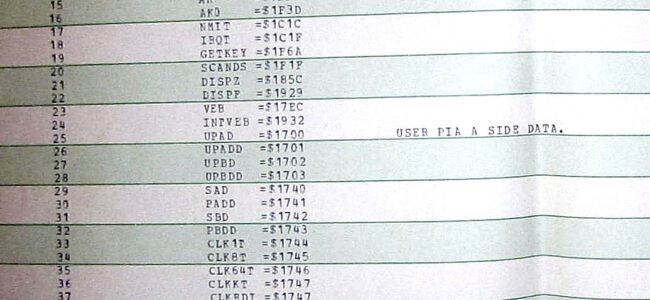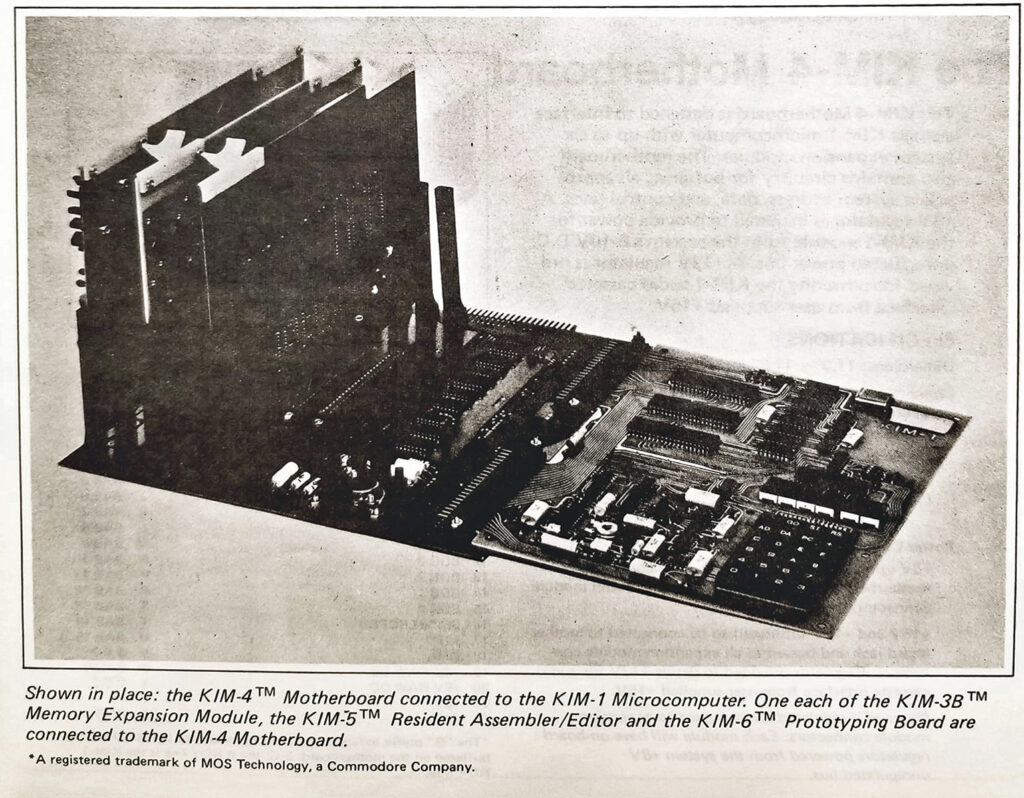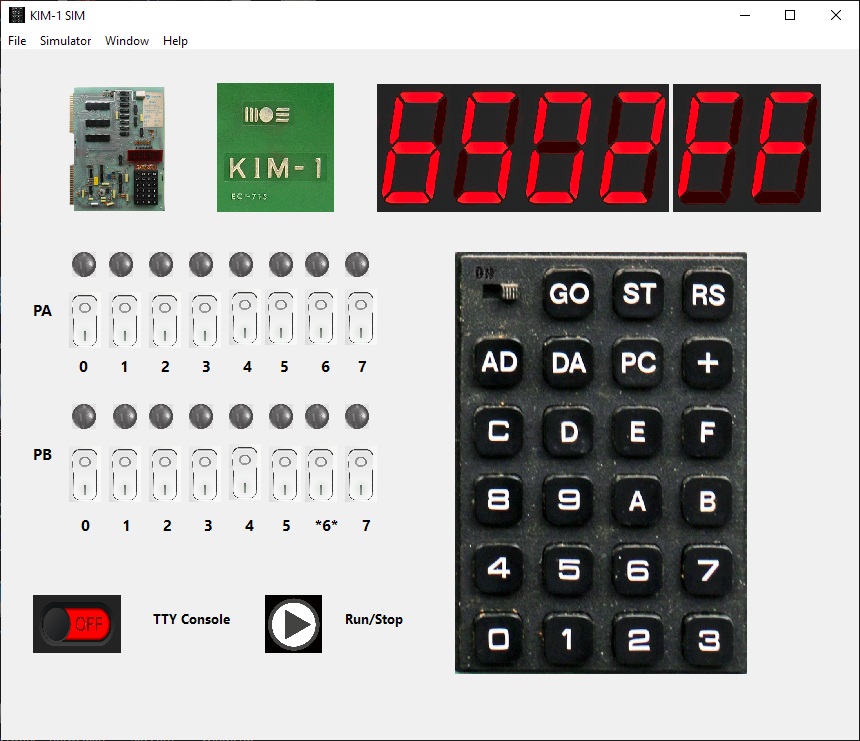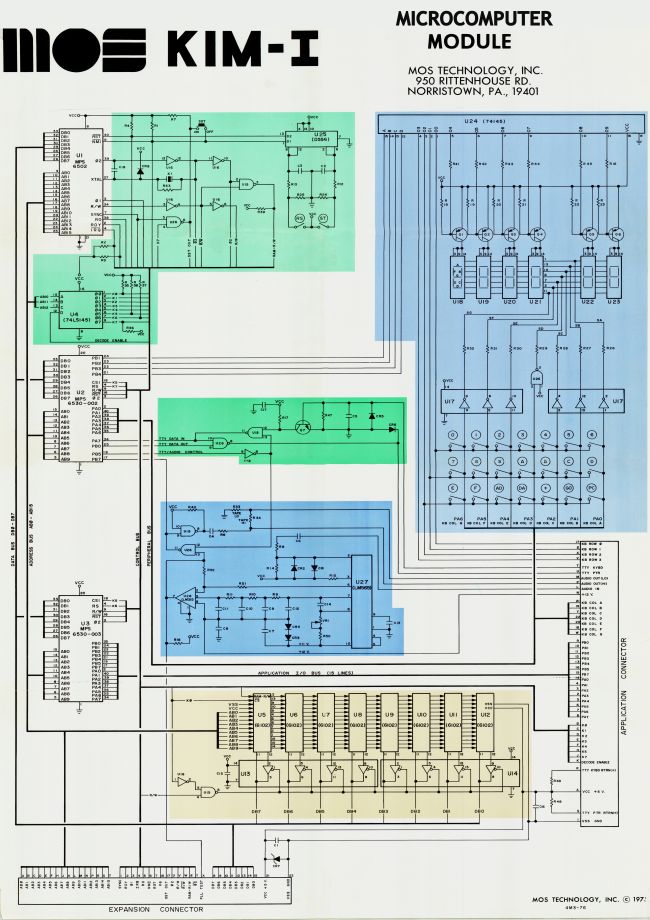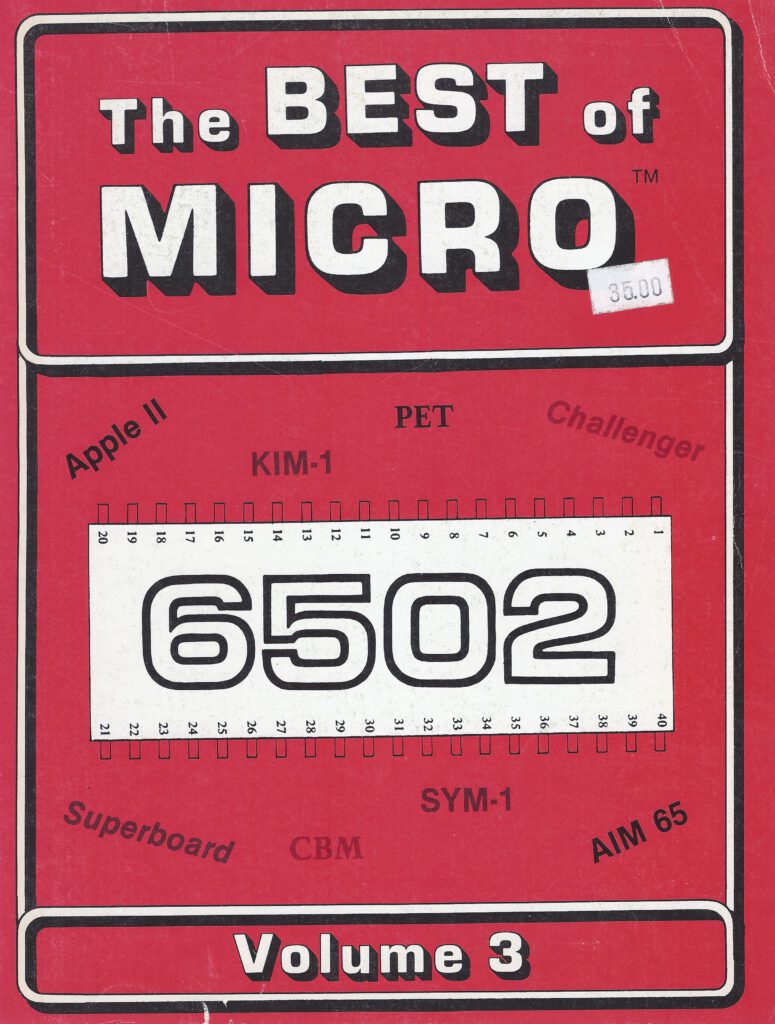This source for an enhancement of the KIM-1 contains Jim Butterfield’s Supertape and some other utilities and code.
The PROM is to be placed on top of memory, it contains the RESET/NMI/IRQ vectors.
The source listing for a PROM designed to enhance the KIM-1.
Written by René Vega of Detroit in September 1976. From the archives of Peter Jennings.
; THE FOLLOWING ROUTINES MAY BE ENTERED VIA THE
; "GO" KEY ON THE KEYPAD.
;
; FC00 - SUPRTP - KIM CASSETTE HIGH SPEED DUMP.
; FE3B - COMPTP - ROUTINE TO COMPARE A KIM FORMAT
; CASSETTE WITH CONTENTS OF MEMORY.
; FE46 - VIEWTP - ROUTINE TO LOOK AT A KIM FORMAT
; CASSETTE WITHOUT ALTERING MEMORY.
; FE4F - LOADTP - ROUTINE TO LOAD A BLOCK IN KIM
; AUDIO CASSETTE FORMAT.
; FCEA - LDSYS - ROUTINE TO LOAD MULTIPLE BLOCKS
; INTO MEMORY REGARDLESS OF THE ID
; NUMBERS ON THE TAPE. UPON LOADING A
; BLOCK THAT BEGINS AT $EF, THE
; ROUTINE JUMPS TO ($EF).
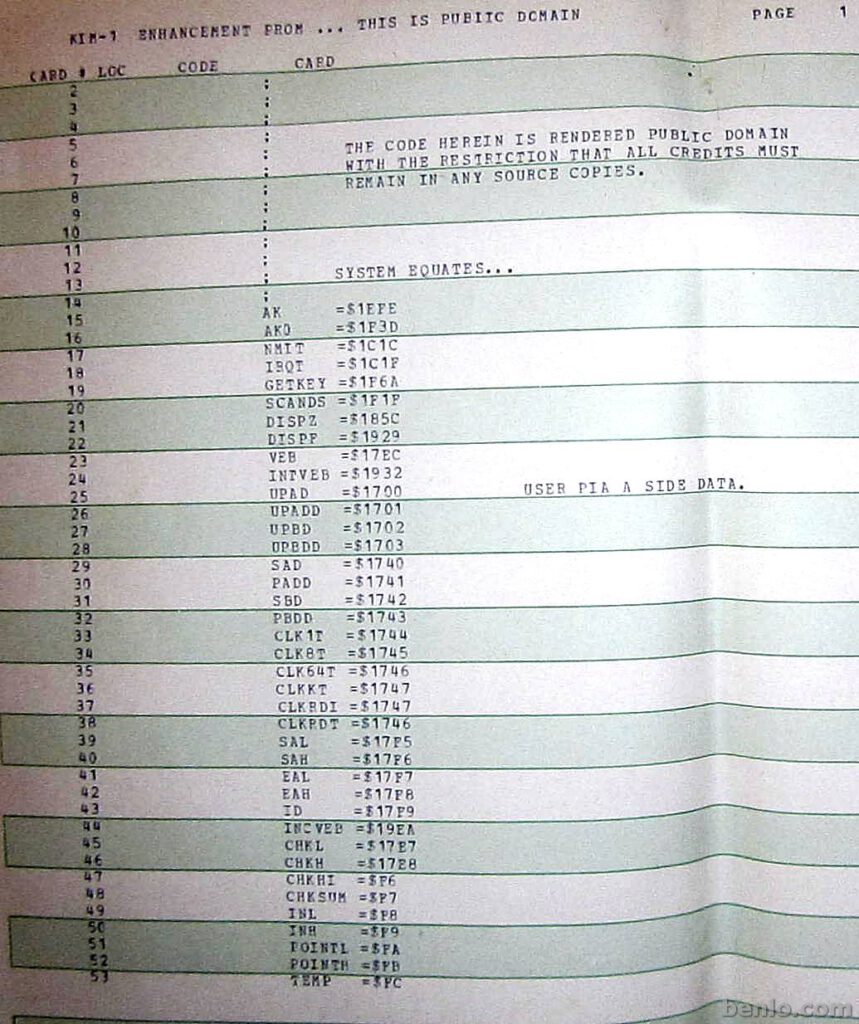
This source for an enhancement of the KIM-1 contains Jim Butterfield’s Supertape and some other utilities and code.
The PROM is to be placed on top of memory, it contains the RESET/NMI/IRQ vectors.
The source listing for a PROM designed to enhance the KIM-1.
Written by René Vega of Detroit in September 1976. From the archives of Peter Jennings.
; THE FOLLOWING ROUTINES MAY BE ENTERED VIA THE
; "GO" KEY ON THE KEYPAD.
;
; FC00 - SUPRTP - KIM CASSETTE HIGH SPEED DUMP.
; FE3B - COMPTP - ROUTINE TO COMPARE A KIM FORMAT
; CASSETTE WITH CONTENTS OF MEMORY.
; FE46 - VIEWTP - ROUTINE TO LOOK AT A KIM FORMAT
; CASSETTE WITHOUT ALTERING MEMORY.
; FE4F - LOADTP - ROUTINE TO LOAD A BLOCK IN KIM
; AUDIO CASSETTE FORMAT.
; FCEA - LDSYS - ROUTINE TO LOAD MULTIPLE BLOCKS
; INTO MEMORY REGARDLESS OF THE ID
; NUMBERS ON THE TAPE. UPON LOADING A
; BLOCK THAT BEGINS AT $EF, THE
; ROUTINE JUMPS TO ($EF).
Source in TASM format, typed in by Rich Cini.
Source on paper

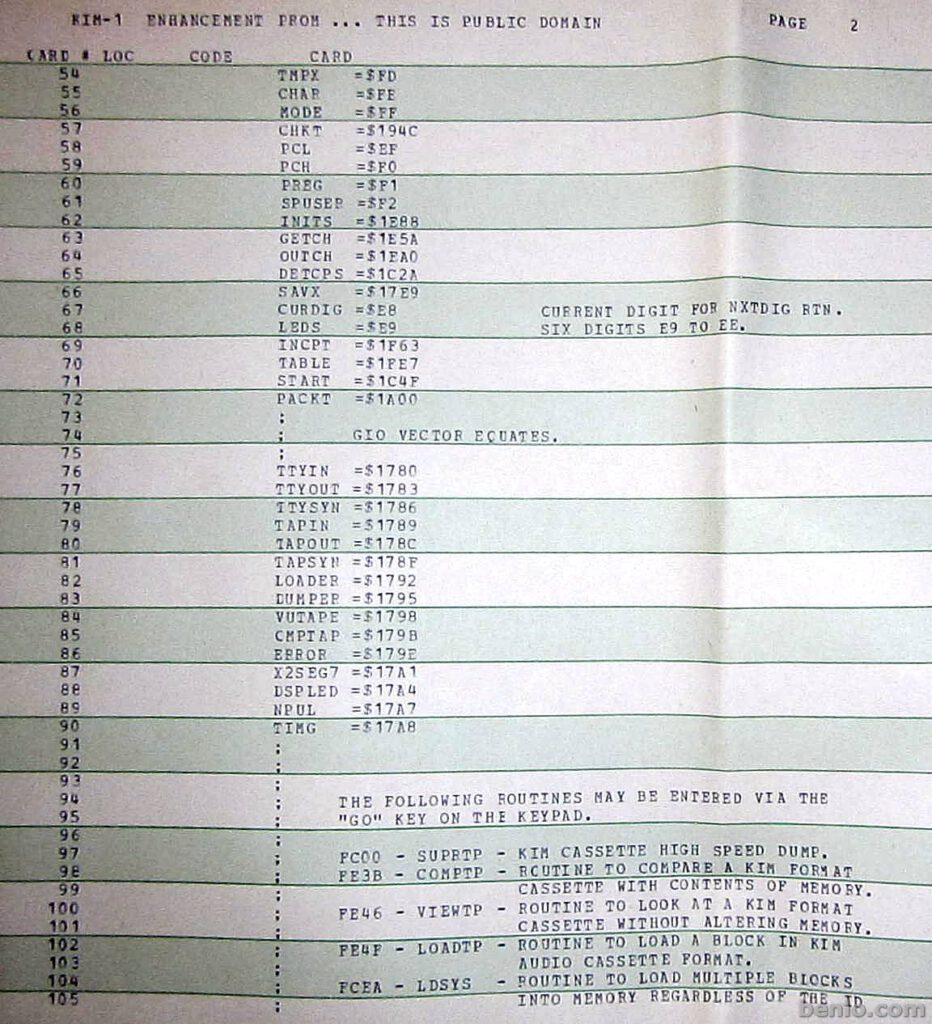
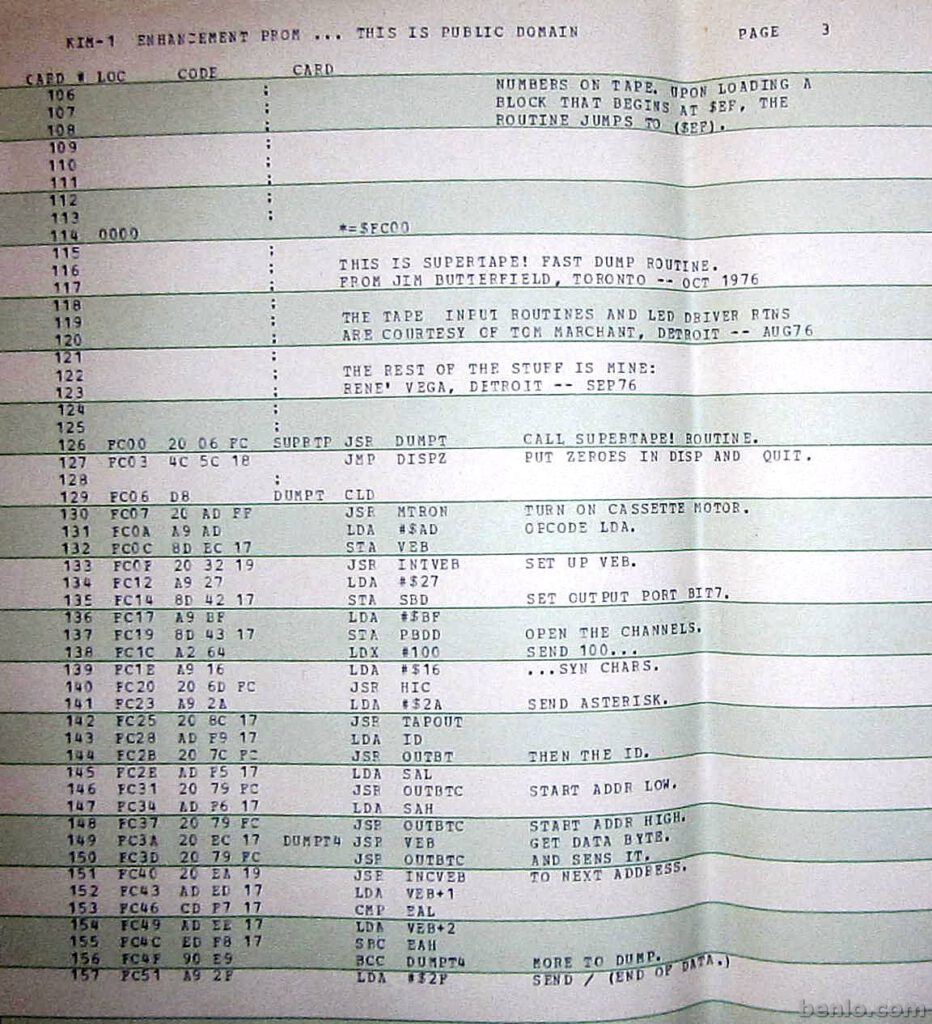
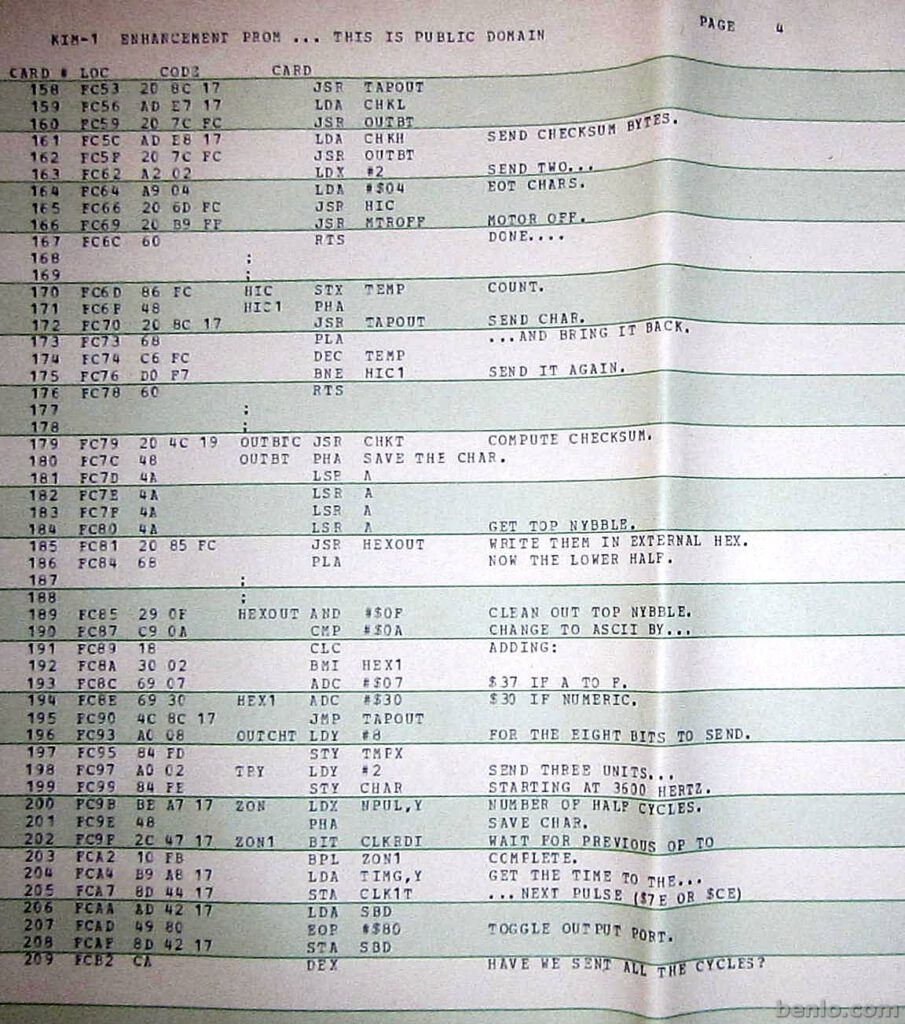
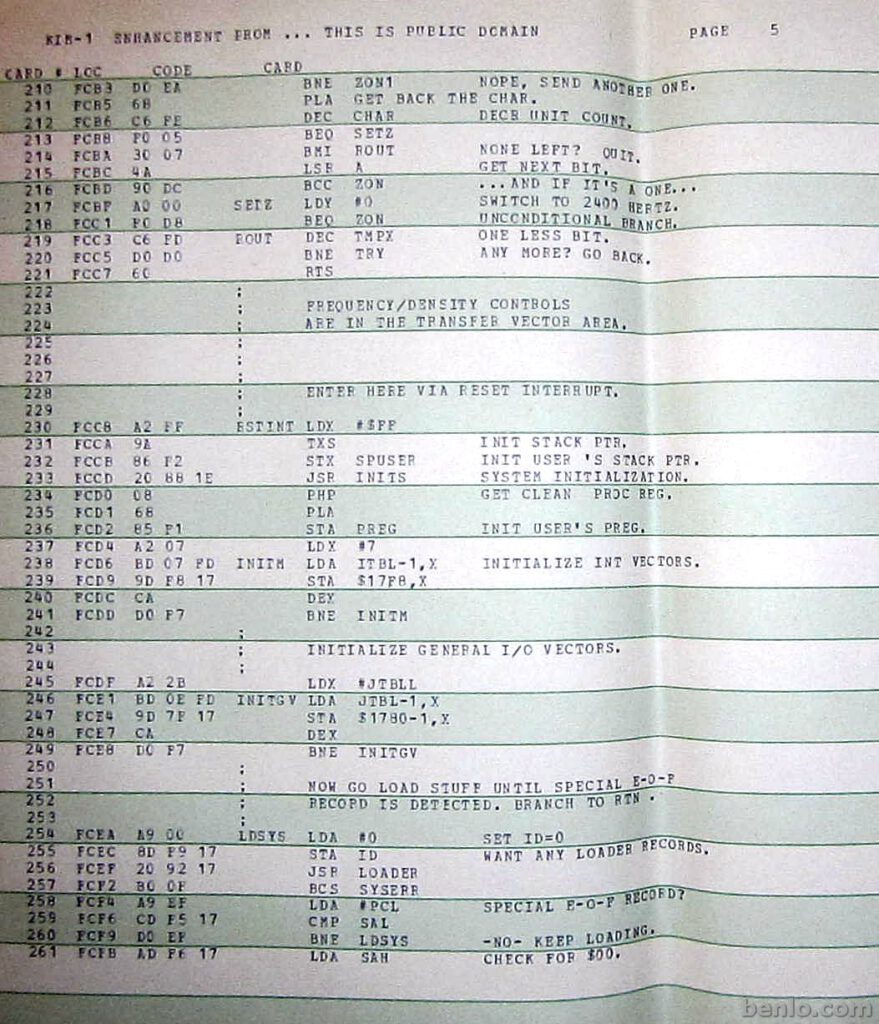
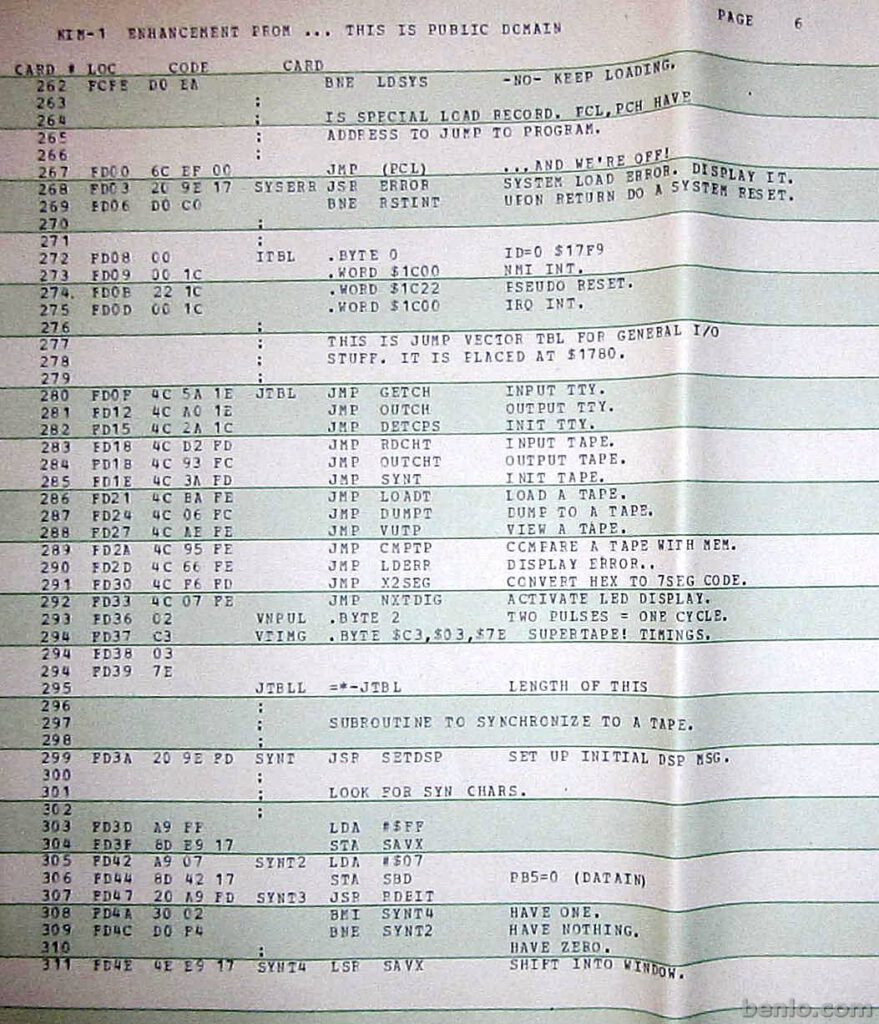
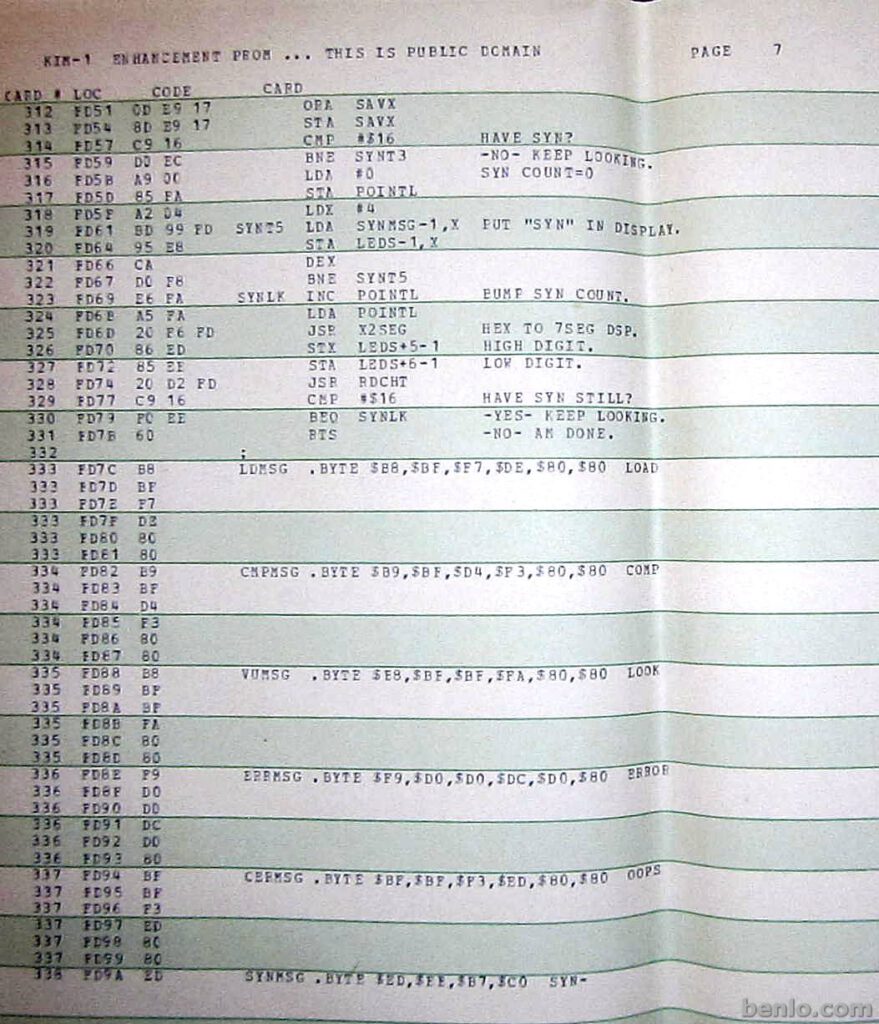
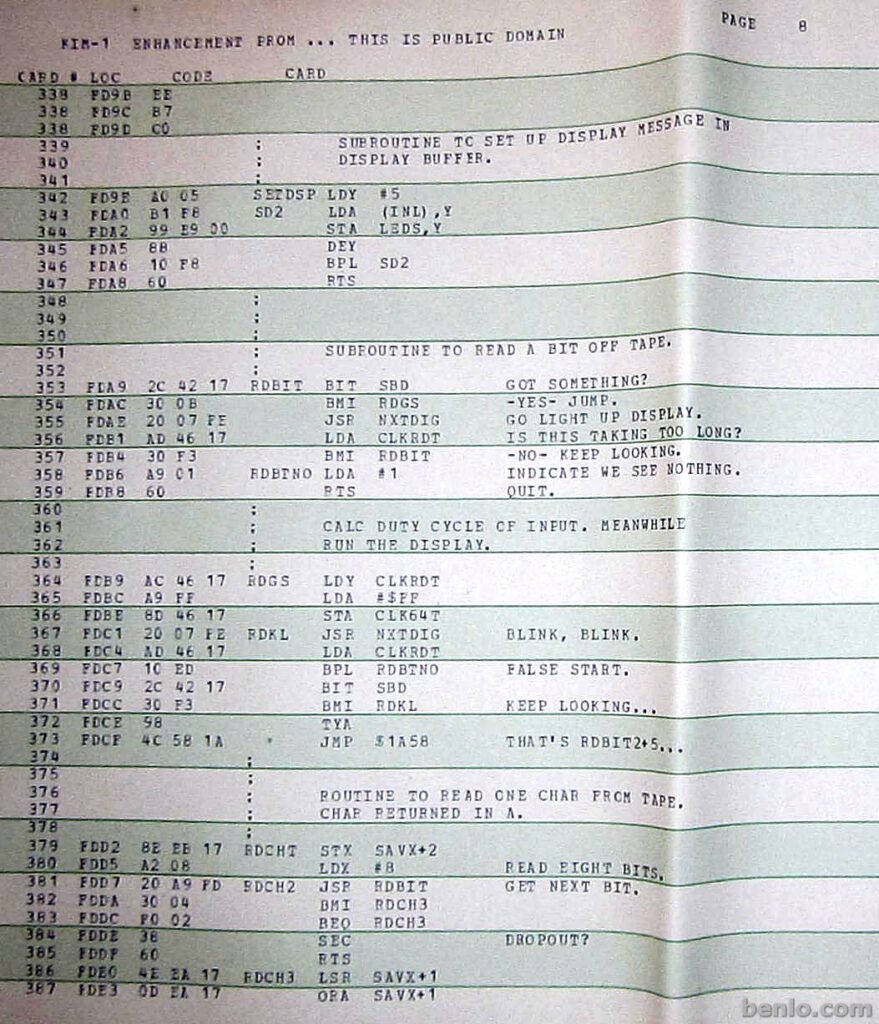
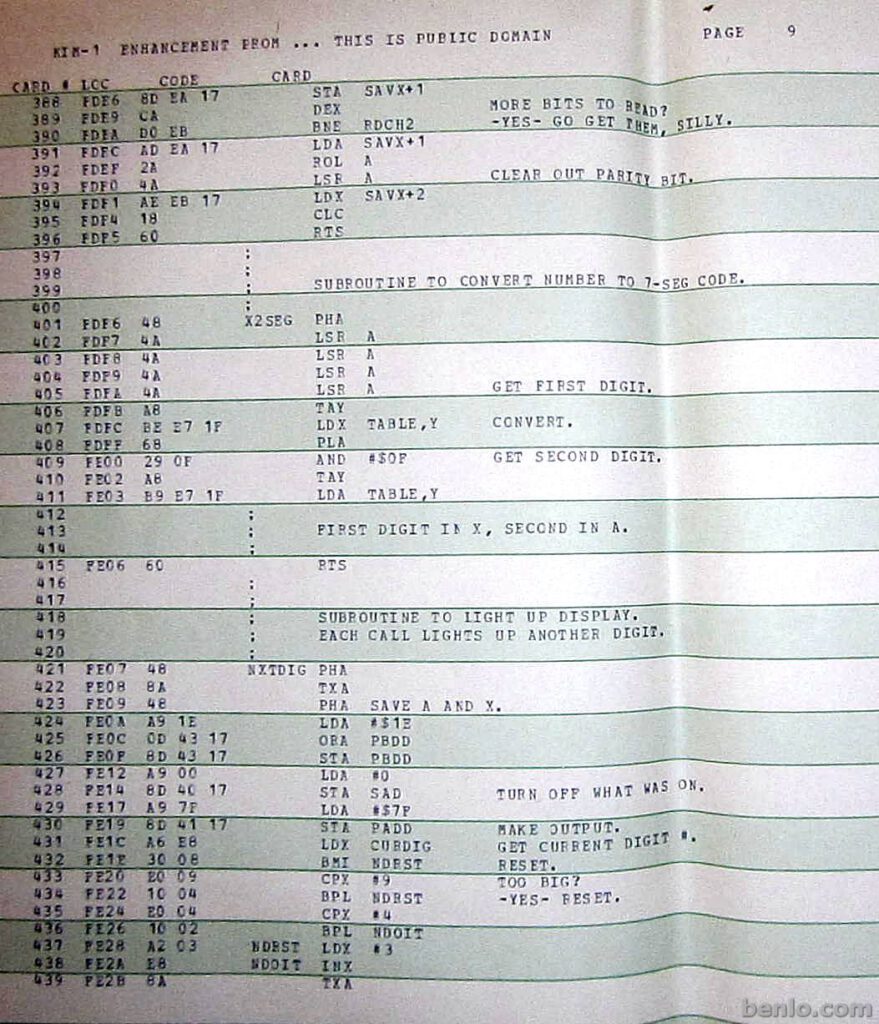
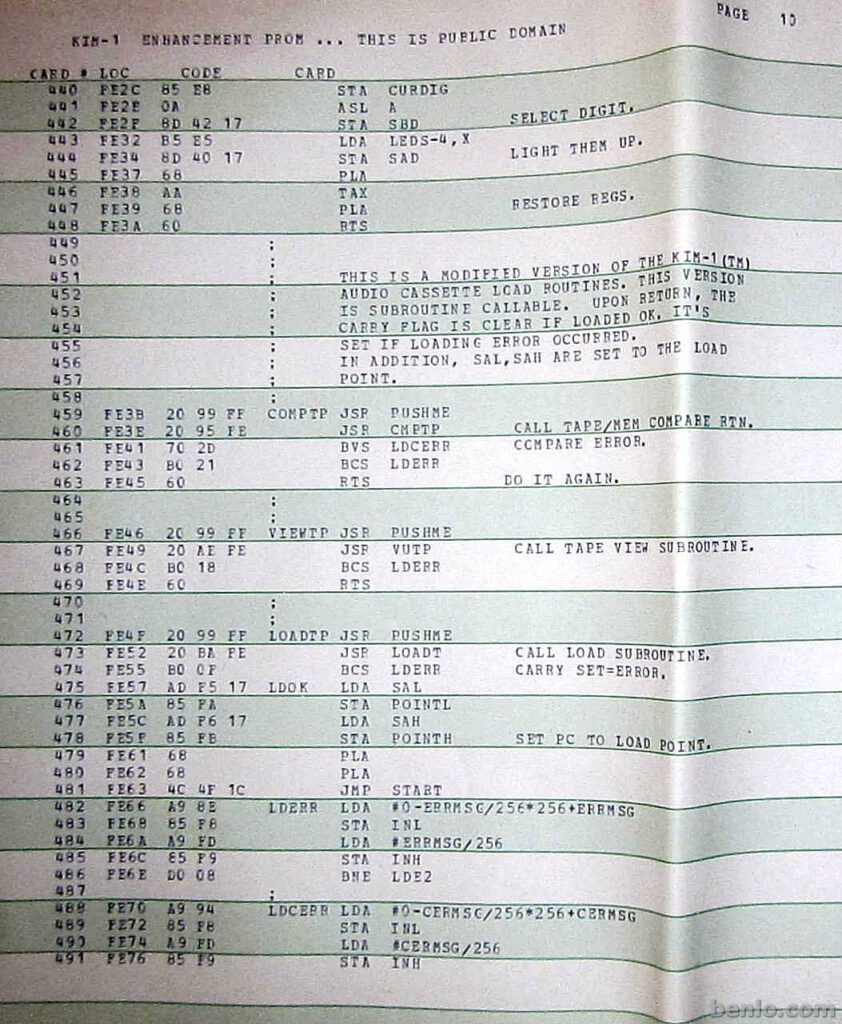
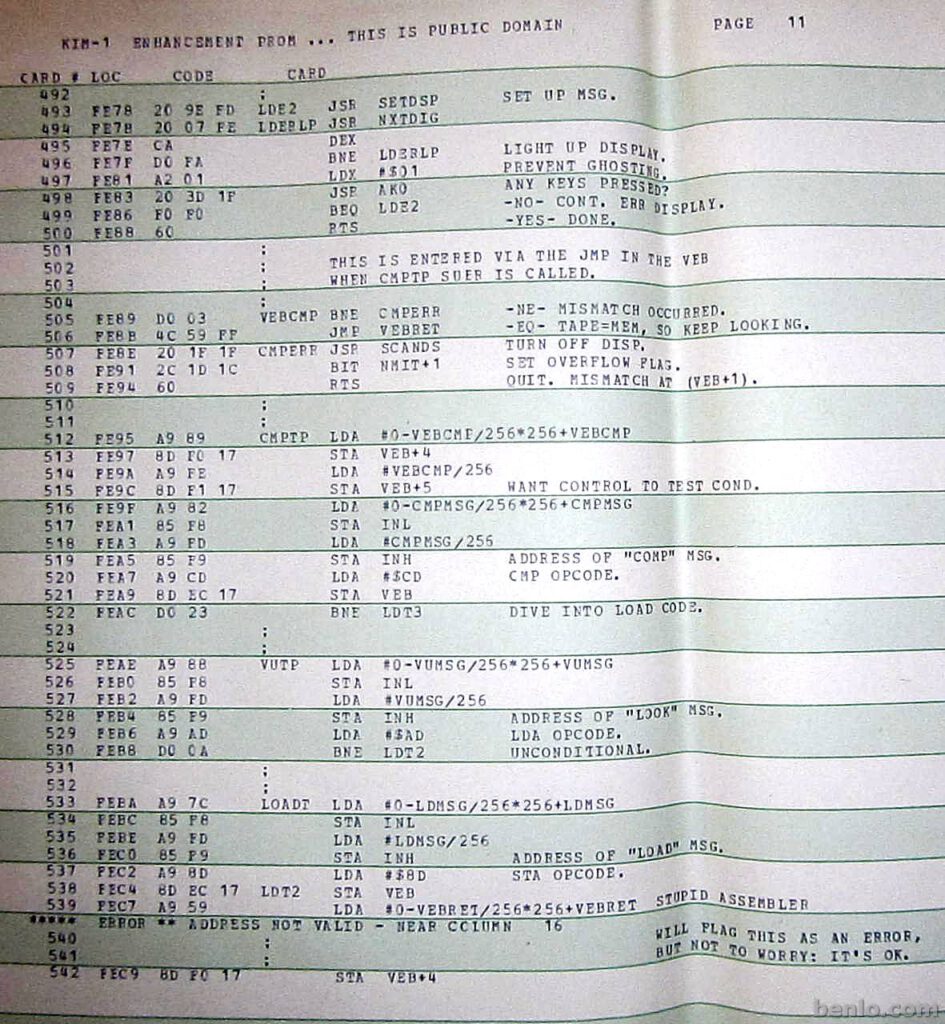
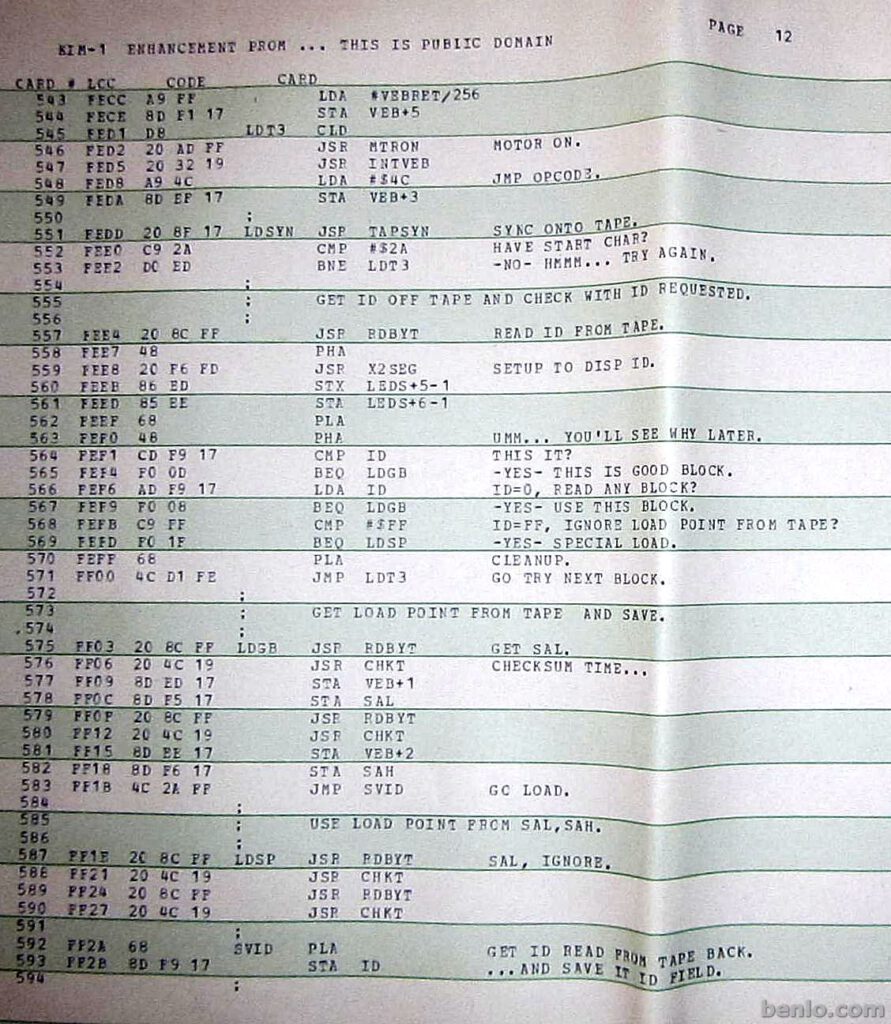
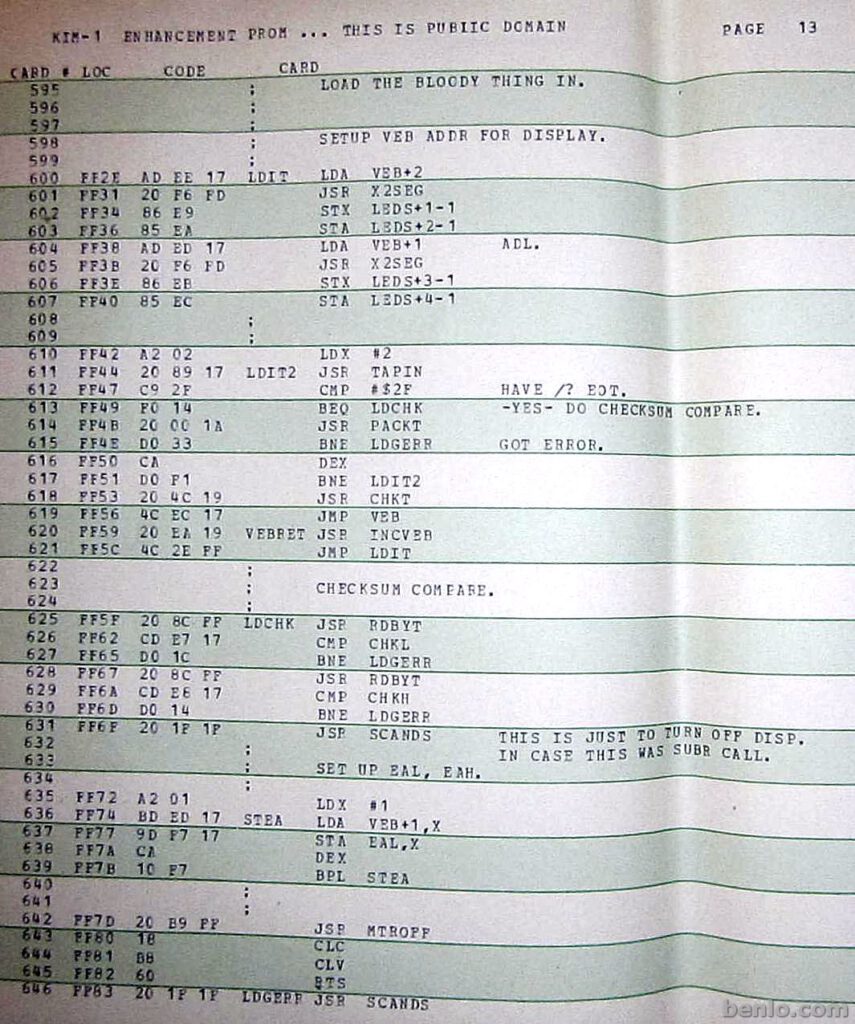

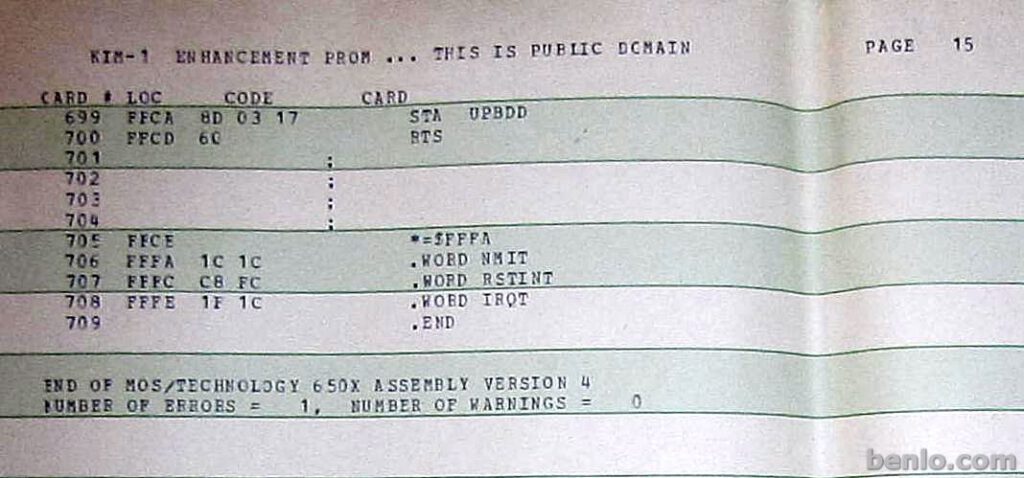

KIM-1 Simulator version 1.1.6 has been published. Get it here.
It now supports Focal-V3D 12-AUG-77 (the Aresco version) from the KIM-1 Software page, see here.
Updates to the Simulator are a working echo suppression (see here for background). Available to any program.
For Focal V3D a setting has to be made in the Settings, to allow Focal to do its magic in the input routine.
By working on Focal I did add comments to the disassembly of what I found. You will find the original by Paul R. Santa-Marie and my partly commented version in the archive.
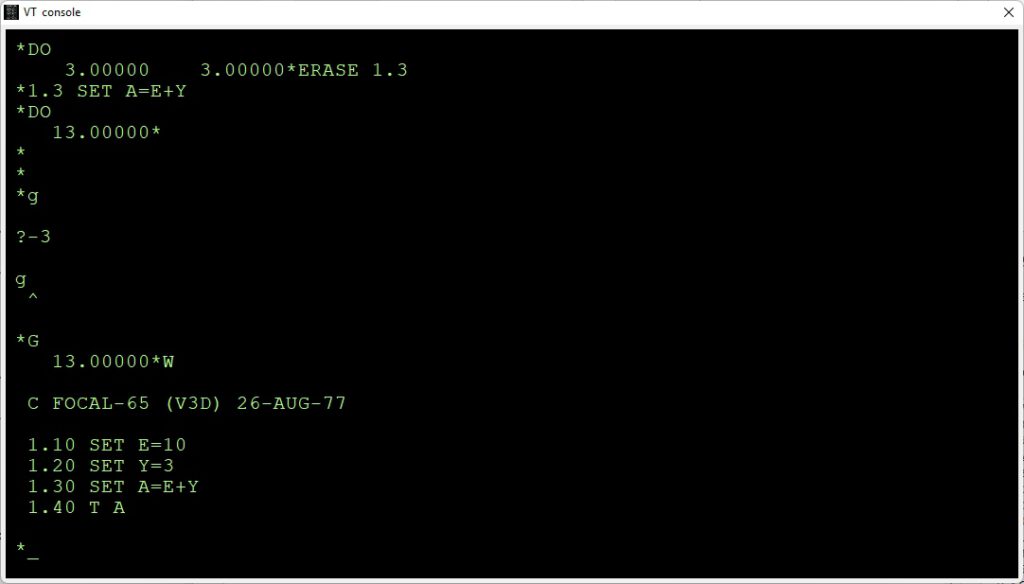
This article is written by Jeff M. Nay, about his experiments to restore a KIM-1 to working order, testing the 6530-002 RRIOT with his own KIM-1.
The challenge was to address the second 6530-002 in this setup at another address then the onboard 6530-002 RRIOT.
The experiment was a success, the 6530-002 is indeed in a bad state, the ROM is corrupt and it had to be replaced.
The KIM-1, from a friend, was in a bad state. The repair was a success also. He was able to get this old KIM-1 working again, after only having to replace, the 6502 CPU, the 6530-002 RRIOT Chip with a Corsham 6530 Replacement board, all 8 Memory Chips and the U17 7406 inverter.
Read more in the group: KIM-1 – Google Groups
Breadboard Test for 6530-002
Attach Breadboard to working KIM-1, using Expansion Port and using K4 and K2 from Application Port (Corsham Application Board)
NOTE: Turn all SW1 switches on CORSHAM Board Off (Or data will repeat at K1,K2,K3,K4)
I started by wiring the data lines on the 6530 to the expansion board pins 15-8.
Then the address lines to pins A-L.
Now it is just a matter of wiring the control lines correctly.
- I have phase 2, pin 3 of the 6530 going to pin U of the Expansion board (Yellow)
- I have pin 4 (RSO) of the 6530 going to (K4) of my Corsham Application Board – (Don’t forget pull up resistor) (Blue)
- I have RES pin 16 of the 6530 wired to pin 7 (RST) of the Expansion board
- I have pin 18, (CS1) on the 6530. Going to (K2) of my Corsham Application Board – (Don’t forget pull up resistor) (White)
- I have Power going to pin 20 and Gnd going to pin 1
You should be able to read ROM at $1000
Looking below at the data sheet, where the address of the I/O and RAM are determined by A9-A6. This means it is not hard set for $1700 or $1740.
K5 ($1400) + A9-A6 determines where the IO of both 6530s will start and end.
I ended up using K2, which starts at $0800 + A9-A6 means my I/O registers should start at $0B40 for the 6530-002 or $0B00 for the 6530-003
I also use K4 for the ROM section of the 6530-002 which starts the ROM section at $1000
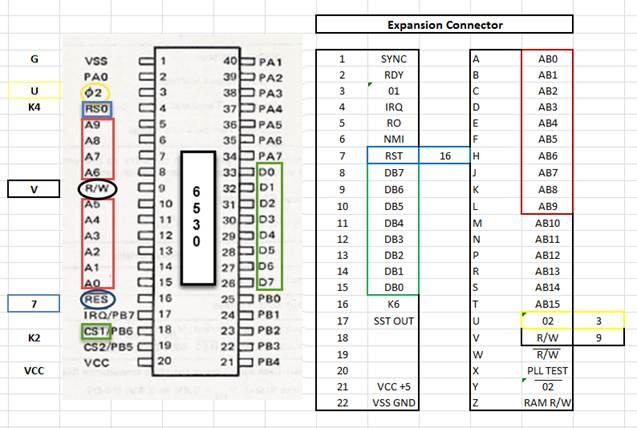
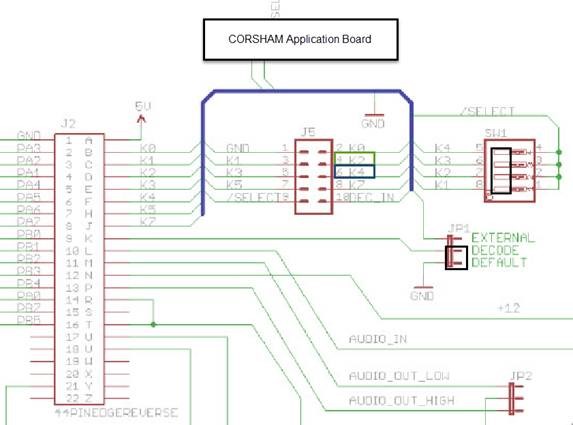
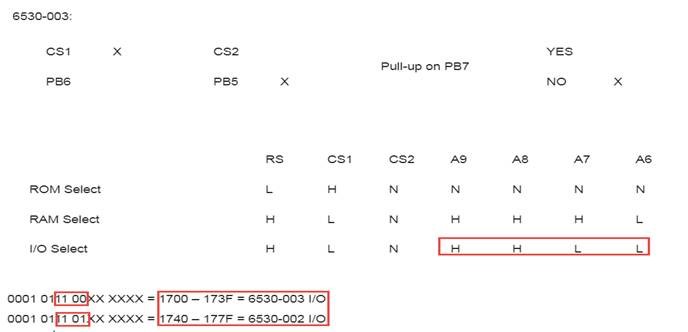
Onboard 6530s6530-003
A9+A8 = 1100000000 = 300H to 1100111111 = 33FH
(K5) $1400+$300 Start the IO for 6530-003 at $1700.
(K5) $1400+$33F End the IO for 6530-003 at $173F
6530-002
A9+A8+A6 =1101000000=340H to 1101111111=37FH
(K5) $1400+$340 Start the IO for 6530-002 at $1740
(k5) $1400+$37F End the IO for 6530-002 at $177F
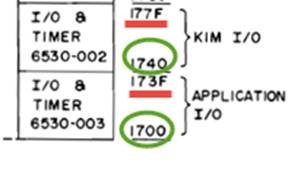
|
Bread Board 6530-0026530-003
A9+A8=1100000000 =300H to 1100111111=33FH
(K2) $0800+$300 Start the IO for 6530-003 at $0B00.
(K2) $1400+$33F End the IO for 6530-003 at $0B3F
6530-002
A9+A8+A6=1101000000=340H to 1101111111=37FH
(K2) $1400+$340 Start the IO for 6530-002 at $0B40
(K2) $1400+$37F End the IO for 6530-002 at $0B7F
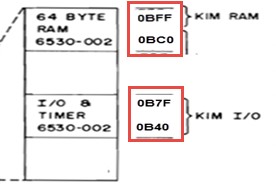
|
This is the ROM of 6530-002 breadboard being accessed at $1000 (85)
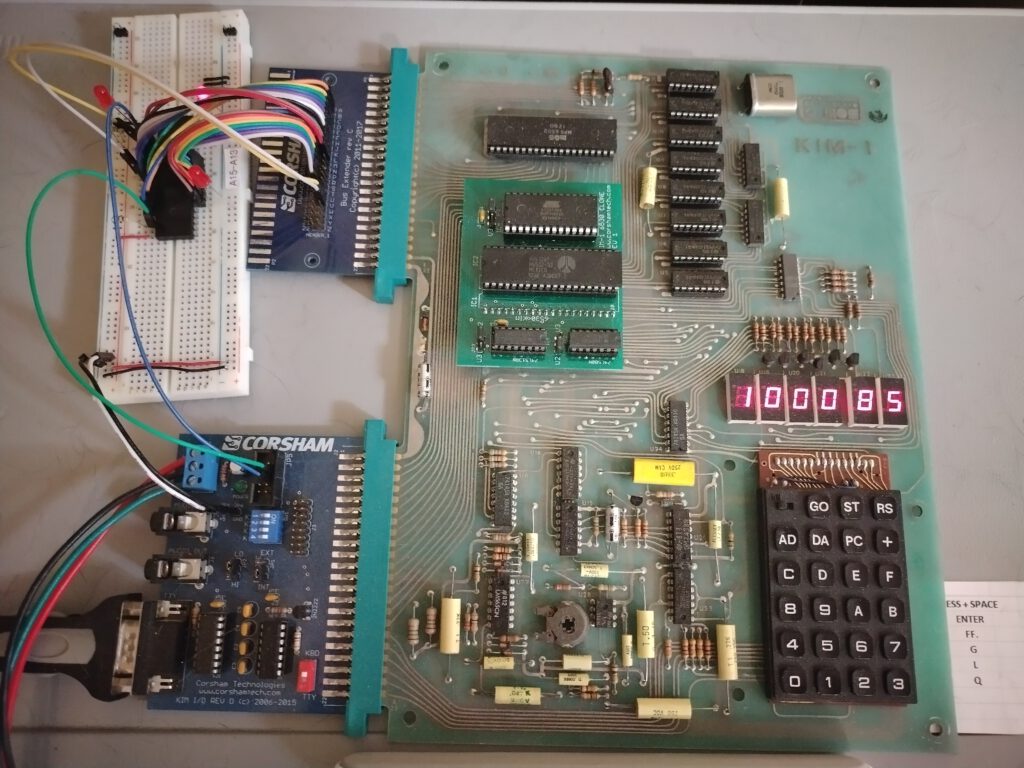
The now working KIM-1:
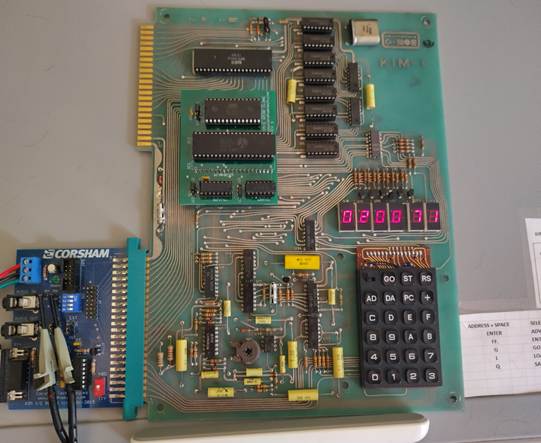
A couple of weeks I published the KIM-1 Circuit Diagram in high resolution, cleaned up by Joshy of Forum64.
Since then I saw people print the poster, and I did have myself made a mouse mat and a poster in KIM-1 format.
To let the printing company do its work I made two new versions of the poster:
- KIM-1 Circuit Diagram in high resolution, cleaned up by Joshy of Forum64 and cleaned up again by me (year 1975, some artefacts
- KIM-1 Circuit Diagram in high resolution, cleaned up with wide borders (for canvas prints)
Look at the KIM-1 Manuals page for those new, large files images.
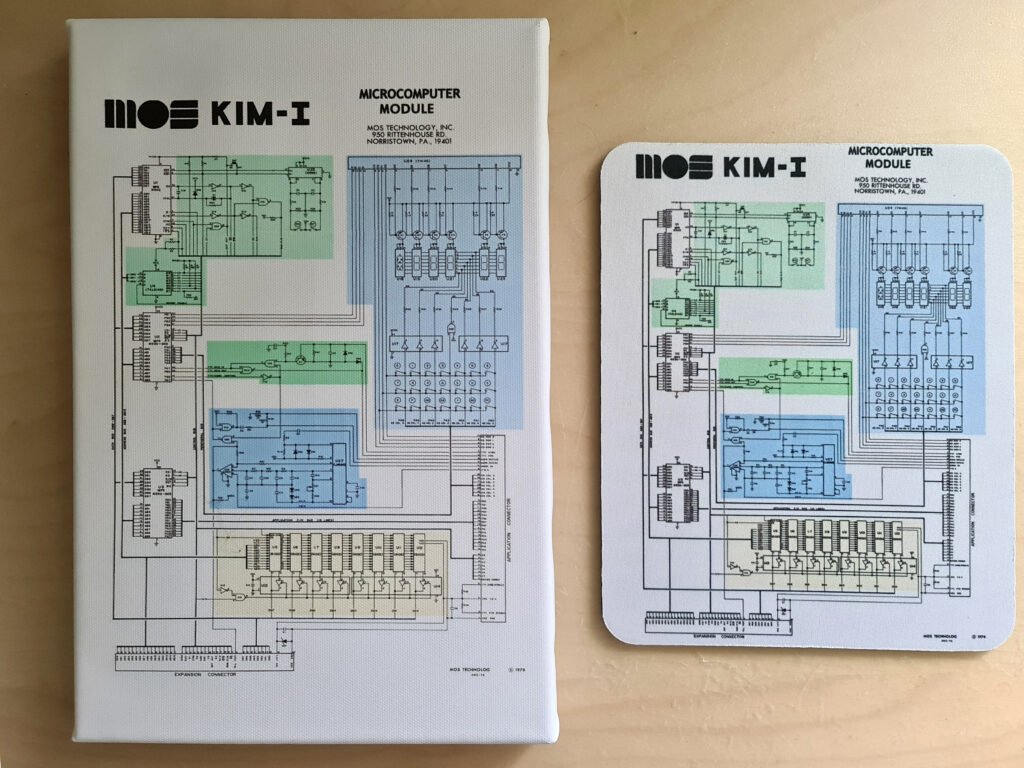
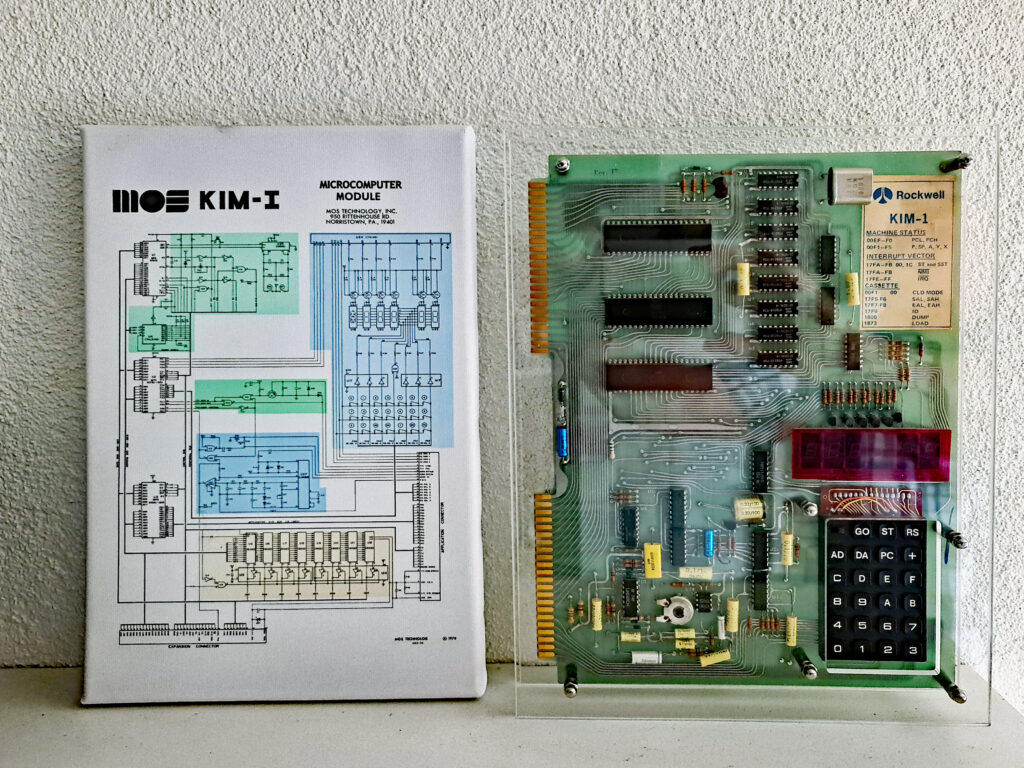
The 6530-002 (the KIM monitor), 6530-003 (the KIM tape routines) and 6530-004 (TIM, the teletype monitor) are in the ROM of these IC’s. Developed in/for/by MOS Technology.
For TIM the Story of TIM (DEMON as Ray Holt called it) tells about Manny Lomas.
It would be nice to know more who did hardware and software design for the KIM-1 (must have been a small team since they are so intertwined) of these innovative early 6502 development.
The story should start with Chuck Peddle and his team. They developed the 6502 and supporting IC’s like 6530 (RRIOT) and 6532 (RIOT).
The story of KIM talks about Don McLaughlin, MOS Technology founder and engineering manager of the project. Peddle and a programming manager named Bob Winterhalt agreed with the idea and the three men began the design. According to MOS Technology employee Al Charpentier, John May did the actual design.


